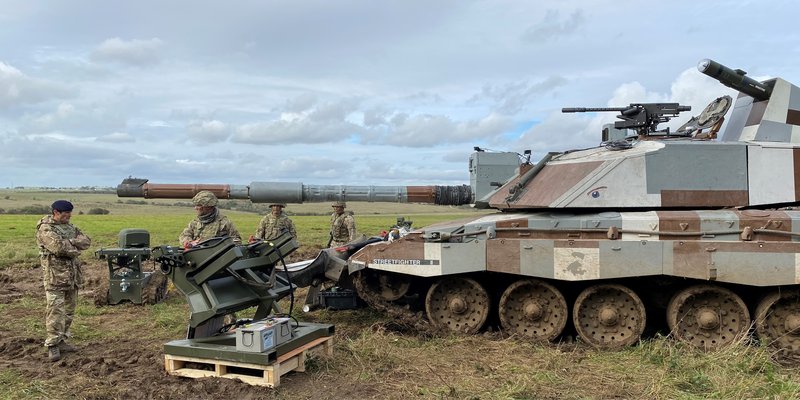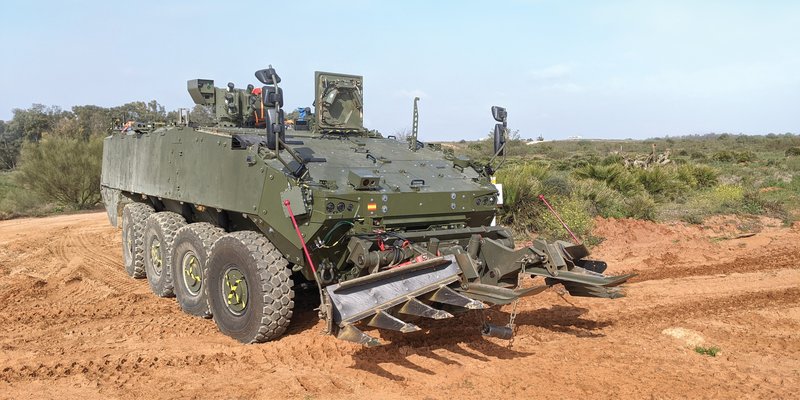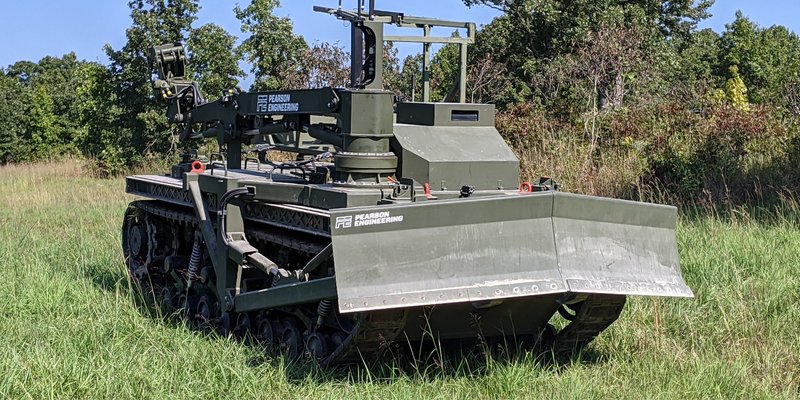Adaptability – A Battlefield Advantage (sponsored)
This story is brought to you by Pearson Engineering.
Engineering on Demand - Operational Readiness
Near peer conflict, political instability and rapidly accelerating technology make for a conflict environment that is characterised by unpredictability.
In response, the well-known armoured vehicle requirements triad of mobility, survivability and lethality has been upgraded in recent years to include connectivity, autonomy and adaptability. This move creates an all-encompassing and demanding ‘Steel Hexagon’ of requirements and trade-offs.
The latter point, adaptability, speaks of the need to respond both strategically and tactically to a battlespace and threat profile that is anticipated to continue to evolve.
In today’s complex operational environment, the ability to readily deploy highly adaptable, agile and scalable equipment can offer a significant battlefield advantage. The role of armoured vehicles equipped to adapt to varying mission sets without fundamental modifications will be critical.
The Pearson Engineering approach to the integration of rapidly interchangeable front-end equipment offers a unique solution in such conditions, enabling high levels of adaptability, and as a result, offering the capability to enhance mobility, survivability, lethality and autonomy.
Proven over almost four decades, Pearson Engineering’s Front-End Equipment (FEE) has been integrated with lightweight, medium and heavy vehicles, both tracked and wheeled, and both crewed and remotely controlled.
Recognising the changing demands placed upon armoured vehicles, Pearson Engineering has invested in the development of new products, supporting not only the combat engineer, but also combat forces and combat support units. In this way, not only does the Pearson Engineering approach offer high levels of adaptability for individual armoured vehicles, but also offers the opportunity to scale different types of armoured vehicles according to mission requirements.
At the same time, Pearson Engineering continues to offer high levels of maintenance, repair and overhaul services and the support of an extensive spares team to ensure the equipment already in service is readily available should the mission demand it. Based in Newcastle upon Tyne in the United Kingdom, Pearson Engineering operates globally in support end-users around the world and their overseas efforts have been recognised by Her Majesty the Queen.
Adaptability and Lethality
The recently developed SLICE vehicle integration kit is an example of developments to improve the adaptability of armoured vehicles. Designed for use with combat vehicles, SLICE enables the integration of Front-End Equipment without permanent vehicle modification. In turn, this retains the vehicle’s lethality, supporting another core principle of the ‘Steel Hexagon’.

Importantly, use of SLICE allows Front-End Equipment used by Armoured Engineer Vehicles (AEVs) to be used by other platforms, further enhancing operational adaptability.
Another of Pearson Engineering’s recent developments, VECTOR, is a prime candidate for use with both wheeled AEVs and Combat Vehicles. The self-protection mine plough covers the width of the vehicle’s wheels, enabling purposeful manoeuvre across a minefield, or to be used to provide independent manoeuvre should the vehicle need to traverse an area to deliver an effect.

VECTOR was recently trialled by the Spanish Army for use with the VCR Dragón. The option to move through, rather than around areas which may contain mines, supports freedom of manoeuvre and enhances operational tempo; especially on a dispersed battlefield where wheeled forces will seek to maximise their agility and speed of movement.
Adaptability and Survivability
Outside of these developments, Pearson Engineering has also recently introduced Threat-Pathway and Threat-Sense. Designed to be used together or independently, these products support freedom of manoeuvre to combat vehicles and combat support vehicles in contested environments.
Threat-Pathway offers a ‘lifeboat’ solution to secure a safe route when facing the threat of scatterable mines. Stowed closely and compactly against the vehicle, Threat-Pathway can be deployed with a single command to create a temporary surface laid mine clearance capability that can be jettisoned after use. It is understood that in such evolving, disperse and complex conflict environments, armoured engineers cannot be everywhere all of the time and so some level of independent manoeuvre and self-extraction can be highly valuable.
Paired with this, Threat-Sense uses artificial intelligence to identify the presence of ordnance on a route. Highly trainable and also adaptable, this product provides enhanced awareness of on- and off- route threats to enhance operational decision making.
Finally, SPARK III, the most recent evolution of Pearson Engineering counter-IED roller solutions, has survivability and adaptability at the core of its design. Incorporating proven roller systems and ground penetrating radar, SPARK III’s modular design allows for the integration of a range of different tools to detect, interrogate and protect.
Adaptability and Autonomy
Building on Pearson Engineering’s decades of delivery and development in this sector, attention is now being turned to the future of mobility, counter-mobility, survivability and lethality.
Pearson Engineering revealed its latest development for Robotic Combat Vehicles at the U.S. Army’s Maneuver Support, Sustainment and Protection Integration Experiments 2021 (MSSPIX 21). RCV-Pioneer offers a palletised set of mission equipment for minefield breaching, route proving, obstacle clearance and assault gap crossing.

Robotic Combat Vehicles (RCVs) will take a prominent position in the configuration of military land forces in future conflict, taking humans away from ‘dull, dangerous and dirty’ tasks, and affording skilled personnel the time and safety to outwit adversaries.
Adaptability as ever, will be key to achieving a battlefield advantage.
More from Industry Spotlights
-
![The power of partnership: GDMS–UK deepens cooperation with the British Army]()
The power of partnership: GDMS–UK deepens cooperation with the British Army
In Conversation: Shephard's Gerrard Cowan talks to General Dynamics Mission Systems–United Kingdom’s Chris Burrows about how the company's UK TacCIS business is reshaping battlefield communications through sustained customer engagement, accelerated innovation and ecosystem collaboration.
-
![Expanded focus – unleashing the potential of commercial SATCOM for defence]()
Expanded focus – unleashing the potential of commercial SATCOM for defence
In conversation... Intelsat's Ray Lindenmayer talks to Shephard's Gerrard Cowan about the new capabilities advanced commercial SATCOM technologies can provide for military customers, and how industry and government can best work together to achieve maximum effect in orbit.
-
![Enhancing education: How CAE is embracing new technology to boost military training]()
Enhancing education: How CAE is embracing new technology to boost military training
In Conversation... Shephard's Gerrard Cowan talks to CAE's Marc-Olivier Sabourin about how the training and simulation industry can help militaries achieve essential levels of readiness by leveraging new technology, innovative procurement methods and a truly collaborative approach.
-
![Why tactical UAVs are winning on the future battlefield (Podcast)]()
Why tactical UAVs are winning on the future battlefield (Podcast)
In Conversation: In this special edition of the Shephard Defence Podcast, Tony Skinner sits down with Dan Slasky, President and CEO of Aeronautics, to explore how cutting-edge tactical unmanned aerial systems are reshaping today’s battlefields.
-
![Fincantieri’s Vulcano Class: a new era of versatility and innovation in naval operations]()
Fincantieri’s Vulcano Class: a new era of versatility and innovation in naval operations
Logistic support ships (LSS) are essential for sustained naval operations, especially during extended deployments far from home ports.
-
![Need more flexibility in battle management system delivery?]()
Need more flexibility in battle management system delivery?
Systematic’s newest solution, SitaWare BattleCloud, brings greater flexibility to combat information systems and C4ISR.
























